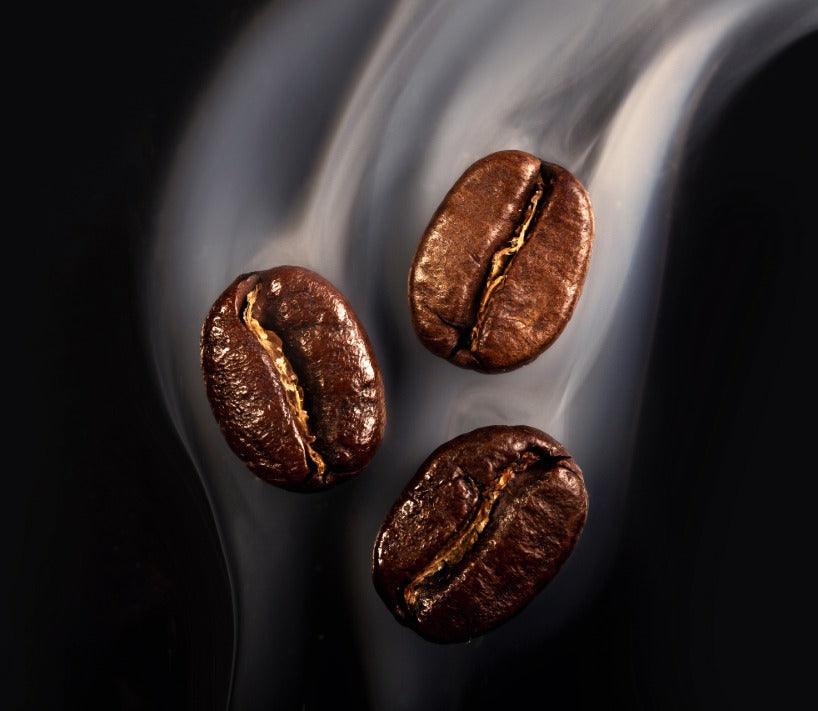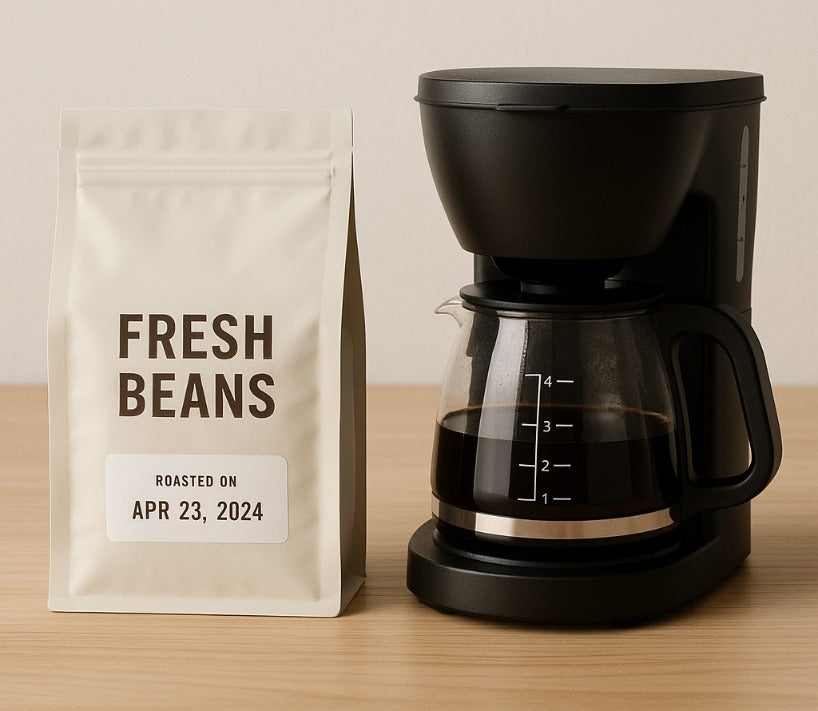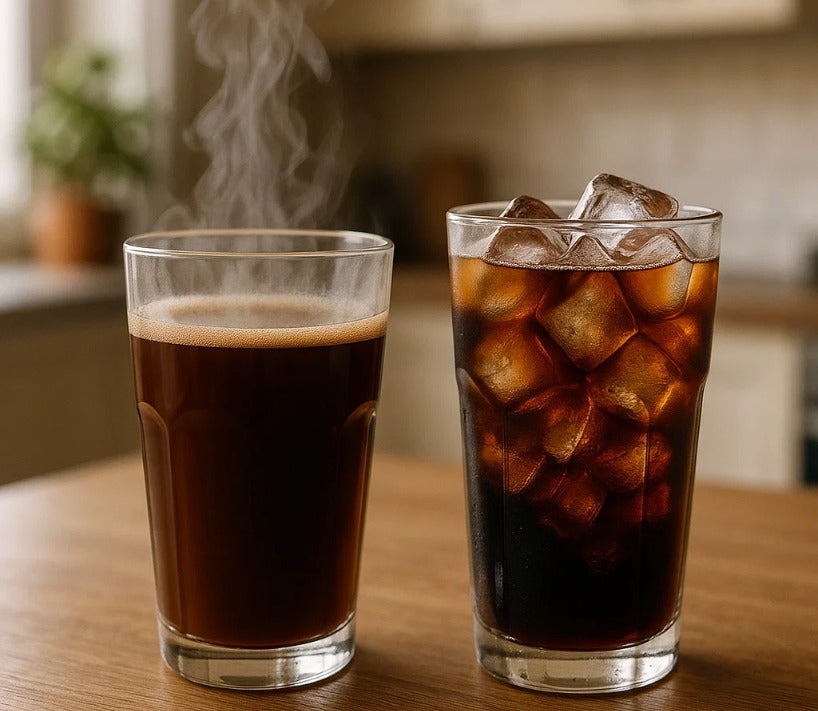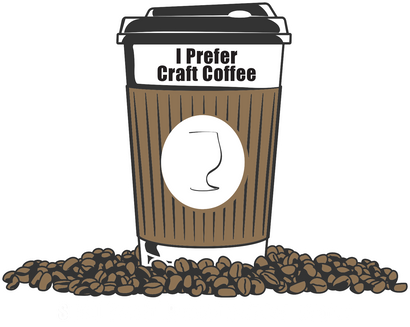Best Espresso Beans Online – Stop Thinking Espresso Means Dark Roast
July 02, 2025 4 min read
Best Espresso Beans Online – Stop Thinking Espresso Means Dark Roast
Spoiler alert: if you’re still hunting the internet for the best espresso beans online because you think only char-as-charcoal dark beans belong in your espresso basket, you’re about to have your world (and your crema) flipped upside-down—in the tastiest way possible.
“Wait… Espresso Isn’t a Roast Level?!”
Picture this: you stroll into a café, eyeball a bag labeled “ESPRESSO ROAST,” and automatically assume it’s darker than Darth Vader’s cape. Meanwhile, a barista friend whispers, “I just pulled a citrus-bomb shot from a light Ethiopian.” Your brain short-circuits. Did someone change the rules without telling you?
That confusion is exactly why we need to talk, friend-o. Because clinging to the “espresso = dark roast” myth is like insisting kayak paddles only work on Tuesdays—utter nonsense that keeps you from brewing the best craft coffee at home.
Where the Myth Came From (and Why It’s Bunk)
1. History’s Smoky Footprint
Early commercial espresso machines (think 1930s Italy) ran hot and messy. They created bitter, under-extracted shots unless roasters cranked beans to French‐roast oblivion. Dark roasts masked machine flaws and tasted “strong,” so the association stuck.
Fast-forward 90 years: modern gear delivers temperature precision worthy of NASA. We don’t need scorched beans to hide defects—we just need good beans.
2. Marketing’s Big, Loud Megaphone
Supermarket bags reading “Espresso Roast” still fly off shelves because:
-
Simplicity sells. One label = no decisions.
-
Flavor memories linger. Folks recall early café visits where espresso tasted smoky, so “that’s how it should be,” right?
3. The Specialty-Coffee Reality Check
Today’s top specialty coffee online scene measures beans by score, not roast shade. Any high-scoring coffee (85+ on the SCA scale) can dazzle in an espresso machine—light, medium, medium/dark, or dark. The secret is dialing in grind, dose, yield, and temperature to match each roast.
Comparison Table — Roast Levels & Espresso Personality
| Roast Level | Typical Espresso Flavor | Ideal Extraction Temperature | Who Will Love It? |
|---|---|---|---|
| Light | Bright fruit, florals, sparkle; high acidity | 200–203 °F (93–95 °C) | Adventurous palates chasing fruit bombs |
| Medium | Balanced sweetness, toffee, gentle citrus | 198–202 °F (92–94 °C) | People who want harmony in every sip |
| Medium/Dark | Dark chocolate, caramelized sugars, subtle smoke | 196–200 °F (91–93 °C) | Latte lovers after bold flavors without ash |
| Dark | Heavy body, smoky cocoa, low acidity | 194–198 °F (90–92 °C) | Traditionalists craving “classic” Italian style |
(Remember, extraction parameters flex ±2 °F depending on grinder, water, and your inner mad-scientist vibes.)
4. Why Light & Medium Roasts Shine in Espresso
-
Higher sweetness potential. Properly extracted light beans pop with cane-sugar sweetness, not bitterness.
-
Layered complexity. You taste origin character—blueberry? Jasmine? It’s like drinking a geography lesson, only delicious.
-
Milk-friendly surprises. Light shots in milk morph into strawberries-and-cream, while medium roasts become liquid caramel. #MindBlown
5. Why Dark Still Has a Seat at the Bar
If you dig smoky bittersweet notes or brew iced lattes loaded with oat milk, dark roasts perform. Just know they’re a preference, not a requirement.
How to Pick & Brew Espresso Like a Pro (Without a Dark-Roast Crutch)
-
Start with Quality. Order the freshest craft coffee online you can find—beans roasted within the past 10–14 days and shipped the same day. (Hello, freshness!)
-
Ignore the “Espresso Roast” sticker. Focus on origin notes and roast level. A light Kenyan might shock you—in a good way.
-
Dial It In.
-
Light roast? Finer grind, longer ratio (1:2.5), slightly higher temp.
-
Medium roast? Classic 1:2 ratio, mid-range temp.
-
Dark roast? Coarser grind, shorter ratio (1:1.7), lower temp.
-
-
Taste, Adjust, Repeat. Channel your inner scientist. Small tweaks turn “meh” into chef’s kiss.
-
Keep Notes. Your future self (and taste buds) will thank you.
-
Explore Subscriptions. A best coffee subscription online rotates origins and roast levels, forcing you to experiment beyond dark.
Quick Myth-Bust Recap
-
Myth: Espresso beans must be dark.
-
Truth: Any high-scoring roast works; extraction variables matter more.
-
Takeaway: Ditch the one-size-fits-all mentality and embrace roast diversity to brew the best coffee to buy online—no warehouse-aged charcoal required.
Frequently Asked Questions
1. Can I pull espresso with light-roasted beans at home?
Absolutely. Use a finer grind, slightly hotter water, and a longer shot ratio to unlock their bright, sweet complexity.
2. Does darker always mean stronger caffeine?
Nope. Light roasts often contain marginally more caffeine by weight because less mass is lost during roasting.
3. Why do some cafés still label bags “Espresso Roast”?
Because old habits (and marketing departments) die hard. It signals beans designed to work easily on espresso machines, but it’s not mandatory.
4. What’s the shelf life of roasted beans for espresso?
For peak flavor, 7–30 days post-roast is ideal when stored airtight and away from light. Fresher beans give you sweeter, richer crema.
5. Should I buy pre-ground “espresso” coffee?
Only if you enjoy flavor death by oxidation. Grind right before brewing for the freshest craft coffee online taste experience.
Final Sips
Congratulations—myth busted, palate expanded! Whether you’re chasing citrusy light shots or velvety medium-dark cappuccinos, remember: the espresso universe is roast-agnostic. Your mission—should you choose to accept it—is to grab the best coffee online free shipping, play with those variables, and sip something extraordinary. Your portafilter (and taste buds) just got promoted.
Also in Best Coffee To Buy Online Education

Best Tasting Coffee At Home: Stop Buying “Deals,” Start Buying Value
November 02, 2025 4 min read
Want the Best Tasting Coffee At Home? Skip old ‘deal’ beans. Use fresh, high-scoring, air-roasted coffee and a simple 1:16 plan. This guide shows proof, a clear promise, and a step-by-step plan to order smart, brew better, and enjoy sweeter, cleaner cups—daily.

Best Coffee To Make At Home: Fresh Beans, Simple Plan
October 31, 2025 4 min read
Learn the Best Coffee To Make At Home with a tiny, repeatable system: pick fresh, high-scoring, roast-to-order beans; brew at a simple 1:16 ratio; fix cups with one change at a time. Includes a comparison table, freshness rules, and beginner-friendly FAQs.

Best Coffee To Drink At Home: Hot or Cold?
October 30, 2025 4 min read
Use this quick Proof-Promise-Plan to choose the Best Coffee To Drink At Home—hot for bright aroma or cold for smooth sweetness. Get fresh-buying rules, grind and ratio maps, and a simple fix-it guide so your next cup tastes the way you like it.
